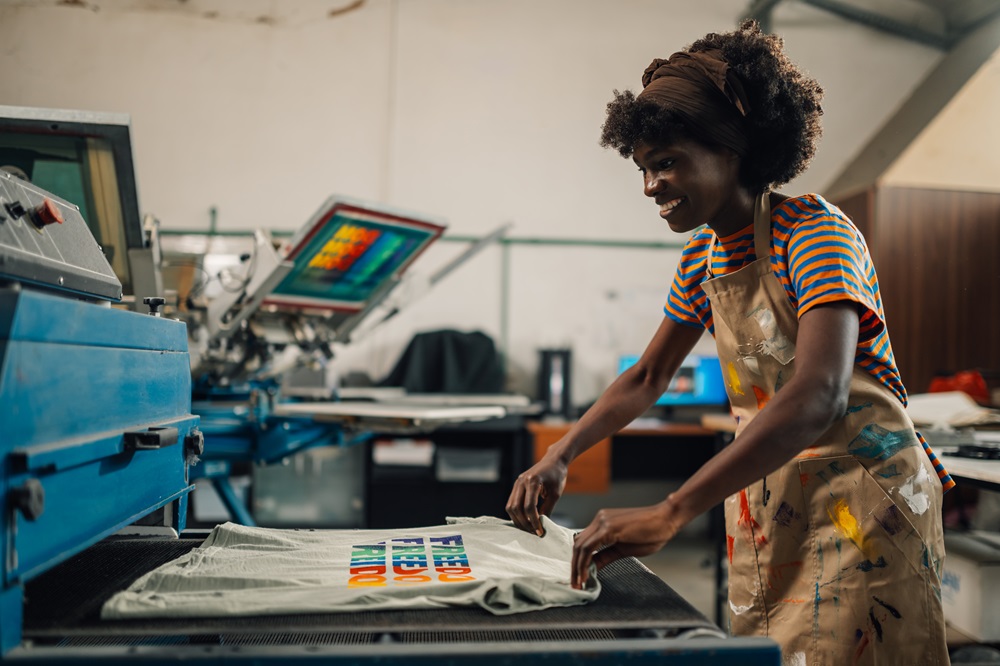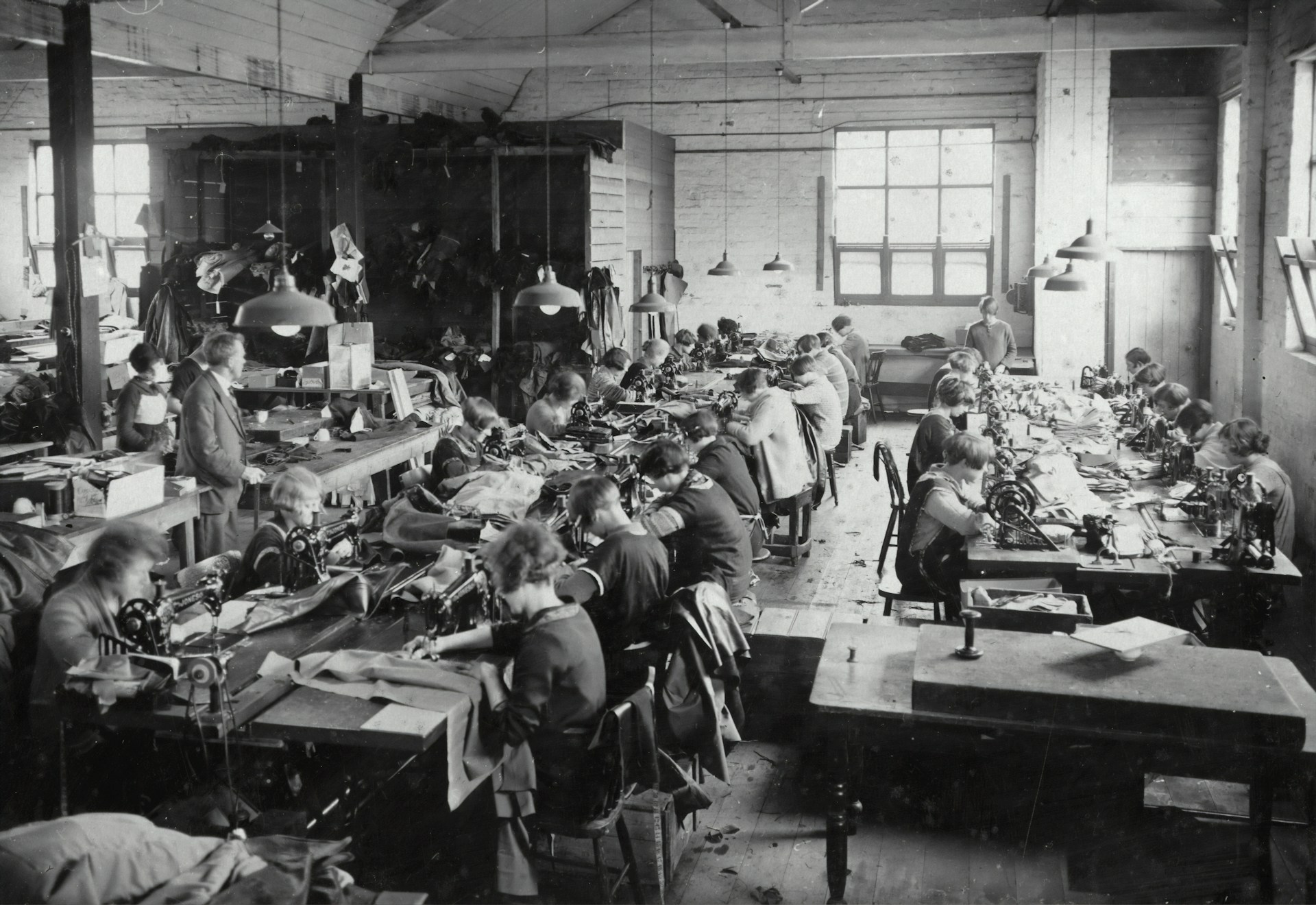Print on demand (POD) is changing the way manufacturers do business by using a model that is low risk, does not require bulk inventory, and allows for incredibly quick time to market. The great aspect of a POD model is that it works completely differently than a typical bulk production model that depends on high quantities and takes advantage of warehousing; it allows minting of products on demand with little economic overhead.
For B2B clothing manufacturers including OEMs, garment factories and white-label manufacturers, this opens the door for new revenue streams, accelerates product speed-to-market, and strengthens client relationships. This blog takes you through everything you need to know about launching a print-on demand company in 2025, including the particular tools and technologies needed, the practical steps to launch it, and how to scale your own POD services. If you are ready to pivot your manufacturing operation with a more modern model, keep reading.
What Is Print‑on‑Demand for Manufacturers?
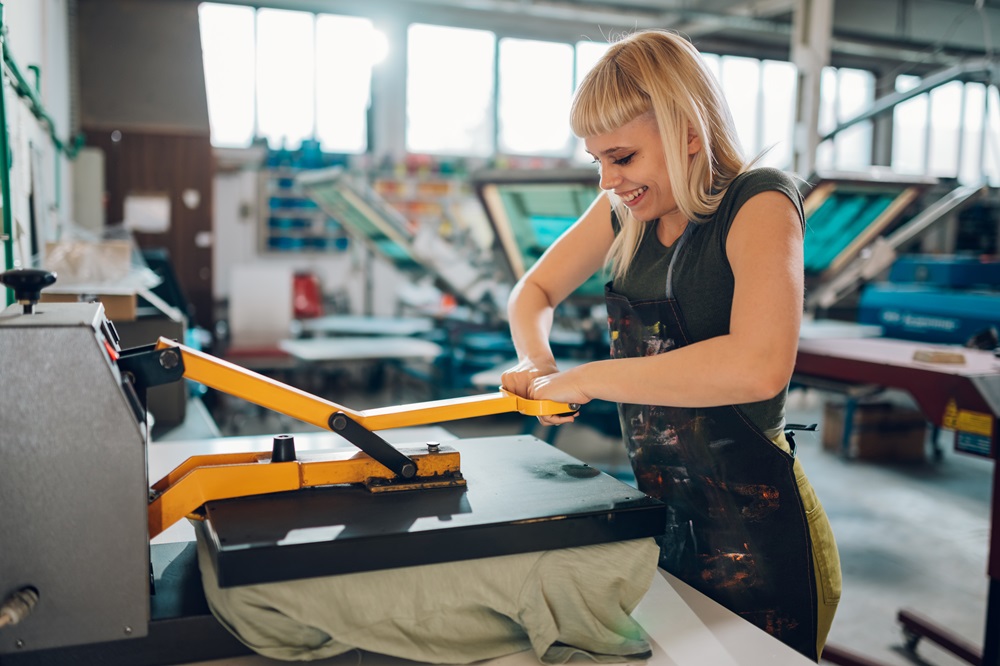
Print-on-demand (POD) for manufacturers is the build-to-order production process that has low risks because you only make items once a customer has placed an order, conscious of the scale of your production business and products.
While traditional manufacturing has a minimum order qty (MOQ) build-up (e.g. a truckload of ten thousand items), which requires considerable investment and inventory, POD eliminates the need for you to commit large quantities and large lead times for bulk production inventory and warehousing. This model only stipulates making or on demand apparel printing only when you have customer orders.
POD will enable manufacturers to take on more customization opportunities, react faster to trends or market demands, and reduce waste. For B2B operations or firms that operate with very low risk such as garment factories, OEMs etc, POD will allow them to produce limited production runs or new niche ideas without hindering operational processes or commitments.
This is a great strategy to test new concepts, address customer demands and diversify the client-base, while maintaining a competitive edge in an accelerating retail environment.
Why Manufacturers Should Consider POD in 2025
In the year 2025, manufacturers will have many reasons to utilize a print on demand for business. First of all, it greatly reduces up-front costs and consequently reduces risk, by not having to buy in bulk to hold in warehouse inventory. This trimming of waste makes it easy to adapt to out-of-stock or changing print on demand market trends, putting manufacturers at less risk, and allowing them to also be experimental about producing new styles and limited-time seasonal designs.
Print on demand helps with fast prototyping and sampling, allowing factories to serve their retail and design customers better, by initiating exclusive capsule collections, and including faster time-to-market shipments. Furthermore, by providing in-house print, plus branding services, manufacturers can deliver value to their clients and strengthen their long-term business relationships.
8-Step Roadmap to Launching POD as a Manufacturer
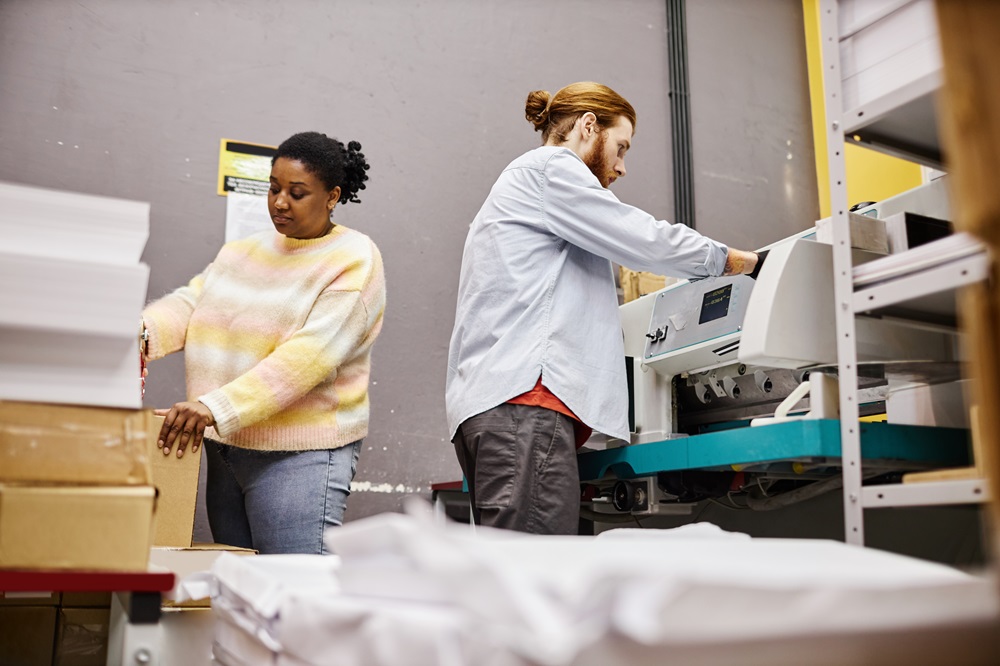
Entering print-on-demand is not just about the technology, it’s about fundamentally changing the way manufacturers deliver value. Whether you are a garment producer, original equipment manufacturer (OEM) or factory brand, you need a strategy to move from the traditional model to the print on demand business model effective in 2025. Below, we have laid out an 8-step plan that will tell you how to start a print on demand business without sacrificing scalability and longevity.
Define Your USP & Niche
To achieve success in POD, you will want to start by developing your unique selling proposition (USP) and identify your space. You will want to focus on specific verticals such as athleisure, corporate wear or eco-friendly apparel. Understanding your strengths whether that is the highest quality fabric, sustainable production or advanced garment construction will help you position your business as a superior POD supplier in the B2B format.
Evaluate POD Tech & Fulfillment Models
Next, you will need to evaluate your in-house capabilities to deliver the print-on-demand services. You will need to determine if your facility has direct-to-garment (DTG), direct-to-film (DTF) or embroidery capabilities. If infrastructure is not an option, you may consider using third-party POD companies that have the Appropriate technology. Be sure to thoroughly evaluate the pricing, print quality, delivery windows and brand control of your POD options to ensure they meet your manufacturing standards and your client’s expectations.
Choose B2B-Friendly Platforms & Integrations
Choosing the right types of platforms is very important for your operations to run smoothly. Look for ecommerce platforms that allow B2B, wholesale order portals or API integrations access for customers. Not only do these platforms make it easy for purchases you need to ensure your backend systems will be proper for their systems as well: automated order flows, automatic notifications, emailing information and updates once orders are placed, etc.
Curate Product Line & Capabilities
Select a strong representing lineup of SKUs that are inclined towards your target B2B clients (polo shirts, jackets, caps, hoodies, workwear, etc.). Offer many options, customizable options in fabrics, sizes and print areas, to meet the needs of many customers. Having a well-defined group of items will make it easy for wholesalers, brands, and designers to quickly create new collections using your fulfillment model.
Develop or Streamline Your Design Workflow
A clean, simple design process is very critical to achieving B2B POD. Use programs like Canva, Adobe Illustrator or in-house designers, for high quality, B2B ready mockups and templates that help streamline the design process. Having a smooth design process will allow for quicker sampling and customizations or changes to your designs and focuses on a better overall experience for your customers who depend on you for their branding.
Set Up Your B2B Order Flow
Design capabilities that enable B2B-level order management—from sample requests and small-batch runs, through to recurring bulk POD orders. Create bespoke portals or ordering services suited to your business clients. Develop clear and scalable payment, logistics, and fulfillment protocols that are capable of servicing increasing numbers of orders and complex client orders.
Launch and Market Your POD Offering
Communicate your POD capabilities once you are ready to go live. Tell the brands and retailers you are working with success stories, provide demo kits and learn where your service may be present at trade shows and industry expos. Communicate your low waste service, fast turnaround, customization, and ability to suit market movements and scaling up. Use targeted marketing to engage viable B2B partners looking for POD manufacturers they want to partner with that can support their efforts.
Measure, Iterate & Scale
Finally, assess your performance with your POD service using key metrics like order volume, turnaround time, return rates, and client satisfaction levels. This information should help you assess your product range in a modern context, shift service levels based on commentary, and adjust for operational level tools like order management features, fintech integration, and level of service standards (SLA). Frequent assessment will allow for continuous improvement to make sure your POD model is competitive, viable, and scalable to future changes in the apparel industry.
Key Benefits & Considerations
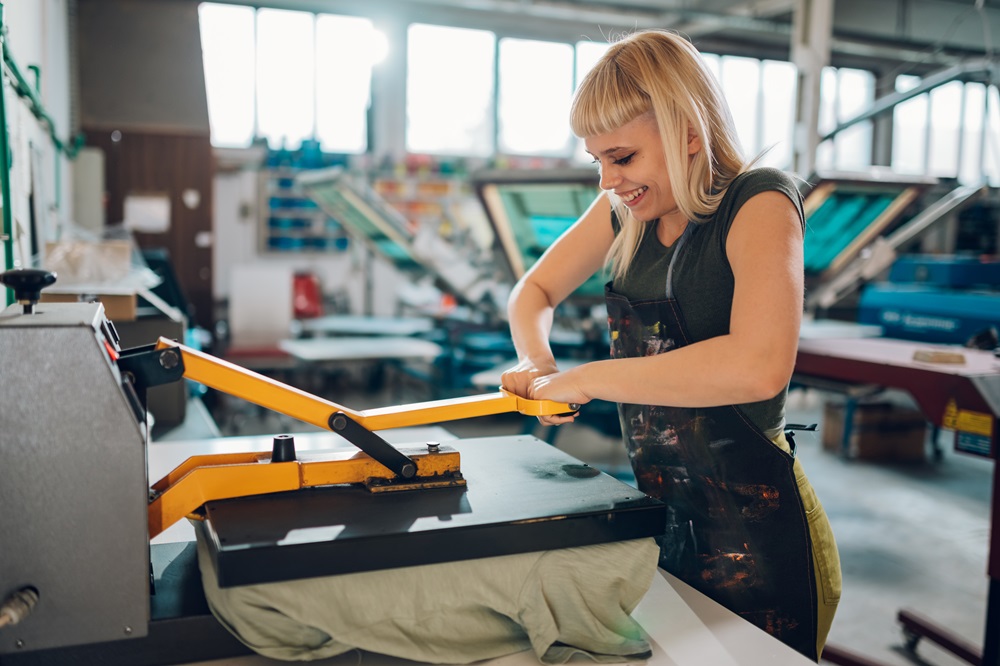
Before embarking on print-on-demand, manufacturers should weigh the pros and cons of the model. Print-on-demand has great potential for creative thinking and flexibility, but it also has operational implications, and manufacturers need to know both sides. Below we examine some of the benefits and costs of print-on-demand from the manufacturer’s perspective.
Pros
From a strategic perspective, print-on-demand has many benefits for manufacturers. Without the need to mass-produce products and store bulk inventory, print-on-demand greatly reduces the cost of storage and financial exposure. POD also allows for quicker sampling so that manufacturers can accommodate a faster product development schedule for retailers, designers, and private-label brands.
In addition, with POD, manufacturers can now quickly, easily, and cost-effectively expand their products as much as required in regard to SKUs and qualifications—without penalty on the sometimes prohibitive MOQs. Plus, manufacturers are now able to provide direct-to-client branding capabilities, which adds value as they now deliver high-order values as finished, branded products, in one retail space.
Cons
Stand-alone POD has, of course, its own challenges that manufacturers need to be aware of in advance. Probably the most significant is that the per-unit cost is higher than traditional mass production, which will affect costing, pricing strategy and margins throughout the POD system. Establishing POD also represents some level of technology investment—i.e. printers, software systems, automation systems—to produce the product at an acceptable quality while trying to do it in the most efficient manner possible.
Furthermore, turnaround time with POD is much tighter, and in some respects those expectations are frighteningly tight in process and timing expectations. Manufacturers need to have an efficient process in place with operational capacity to meet their service level agreement and fulfillment expectations with on-demand. That is a lot of pressure for all parties involved to produce and ship the product in the quickest time possible whilst keeping the client happy.
How Much Does It Cost To Start A Print-On-Demand Business?
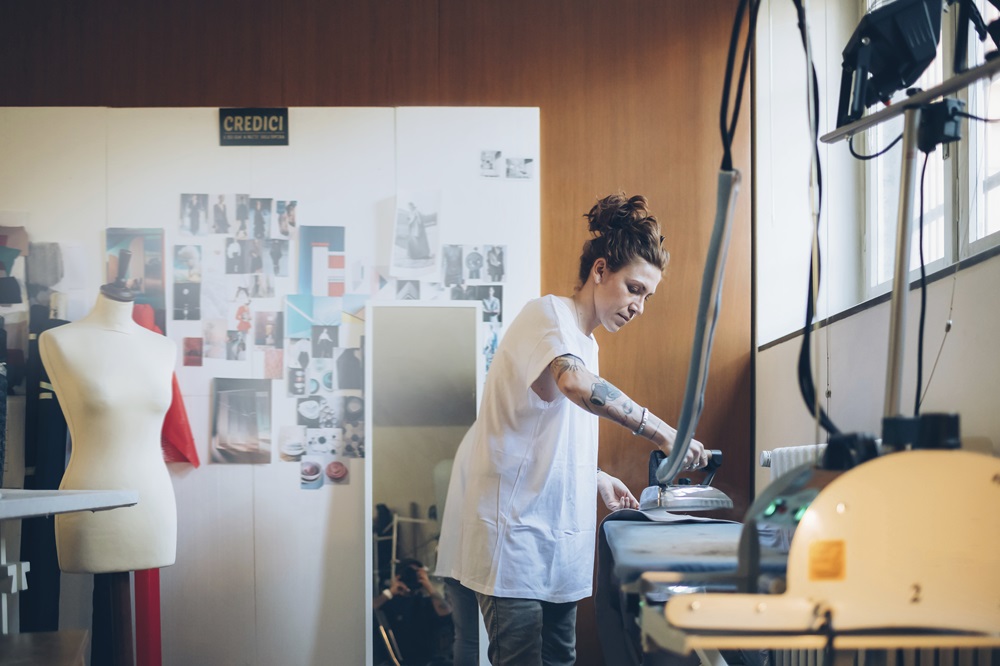
The startup cost for a print-on-demand (POD) business may be unexpectedly low, especially in comparison to traditional manufacturing businesses. Most small businesses can expect to pay between $100-$500 in startup costs for POD, with most of the cost attributed to registering your domain, setting up a website (e.g., Shopify or WooCommerce), and designing (e.g., subscriptions to Canva and Adobe Creative Cloud).
If you are a manufacturer of products and shifting into POD sales, you may incur some costs in terms of equipment purchases (DTG printer or DTF printer, heat press, software integrations) for Sublimation Printing Service or screen printing service that will cost from a few thousand dollars to tens of thousands of dollars, depending on how big you want to go. However, since you do not need to carry any bulk inventory, pay warehouse fees, or carry out large production runs, the startup risk continues to be much lower than traditional models.
Conclusion & Next Steps
Print-on-demand provides manufacturers with a powerful opportunity to innovate, mitigate risk and delight customers faster and more flexibly. By moving to a build-to-demand model, you can reduce inventory, increase capacity and create parity with fast moving market trends. Are you curious about revolutionizing your business model with POD? Start examining your technology, launch a pilot POD capsule collection, and engage your top clients for initial feedback. To help you get started, download our free POD Readiness Checklist or book a consultation with our team to see how we can assist you in your POD journey from concept to fulfillment. If you’re planning to start your own clothing line, consult weft apparel, the best clothing manufacturers in town.
FAQs
1. What is the best place to sell print-on-demand products?
The best sites for print-on-demand products are Shopify, Etsy, and Amazon Merch on Demand or Redbubble; each has their own audience. Shopify is an excellent choice if you want to create a branded online experience with full control. Etsy is good for hand-made and handcrafted types of items with artistic appeal, and Amazon has the massive reach of their marketplace and usually built-in traffic. If your business is a manufacturer or B2B merchant, being able to integrate Shopify or a custom wholesale portal will allow you to interact directly with your clients, keeping more of your profits.
2. Do you need a license for print-on-demand?
Generally speaking, you do not have to get a special license to start a print-on-demand business, but I would recommend that you register your business in a legal form in your country (LLC, sole proprietor, etc.). If you are selling an item that is branded or copyrighted material (like fan art, logos, etc.), you will need the appropriate licensing or written consent.
You are responsible for the laws of your area regarding the starting and running of your business, taxes, and e-commerce.
3. How do I avoid copyright on print-on-demand?
When it comes to copyright issues, the best practice is to only use art, designs, or content that you created or have the documented right to use. Avoid using logos, characters or phrases of popular media unless it is licensed. Use royalty free images or designs from a reputable source with credible licensing. Always read however what the licensing actually states. If you hire a designer, make sure you are clear about getting full right releases for designs or add commercial use to your contracts to fully protect you.

